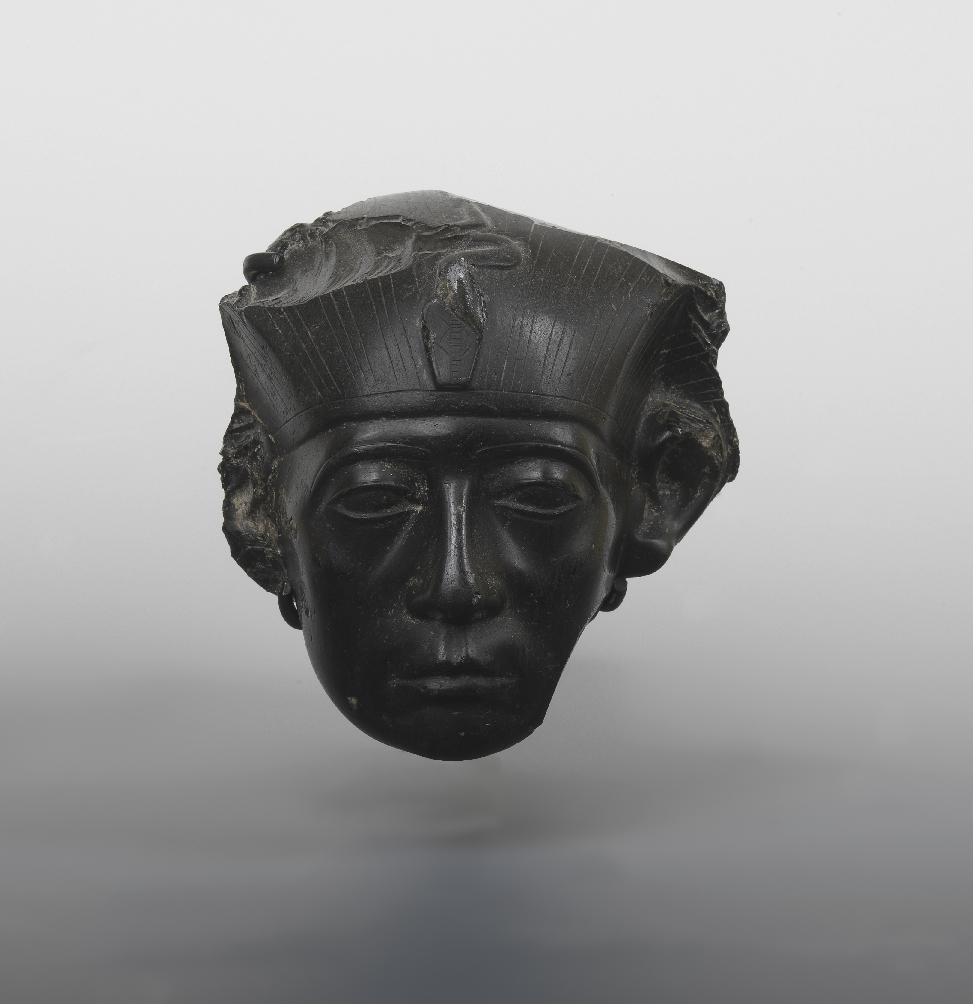
- Egypt, Middle Kingdom, 12th Dynasty (c. 1860 BC)
- Obsidian
- Inv. 138
Head of King Senwosret III
This head, a masterpiece of Egyptian craftsmanship, was part of a full-length statue that probably portrayed the pharaoh Senwosret III in his mature years. The pharaoh is wearing a pleated head-dress (nemes), with the sacred serpent (uraeus), the symbol of royal power.
In this piece the artist conveys the impression of a firm but very human character, though revealing the burden of enormous responsibility inherent in his position.
Made of obsidian, volcanic glass, a material of great strength and fragility, this portrait was produced at a time when a definite cultural and artistic renaissance was taking place in Egypt, as was illustrated by the flourishing of portraiture.
MacGregor Collection. Acquired by Calouste Gulbenkian through Kehyaian at the sale of MacGregor Collection, Sotheby's, London, 6 July 1922.
H. 12 cm
Harris 1966
J. R. Harris, Egyptian Art. London: Spring Books, 1966, p. 33, fig. 14, pl. 17.
Yoyotte 1968
Jean Yoyotte, Treasures of the Pharaohs. Geneva: Skira, 1968, pp. 49–51.
Donadoni 1981
Sergio Donadoni, 'L’Egitto', in Storia Universale Dell’Arte (Sezione prima). Turin: UTET, 1981, p. 94, cap. V.
Walker 1983
John Walker, Portraits. 5000 years. New York: Harry N. Abrahams, 1983, p. 20, no. 8.
Assam 1991
Maria Helena Assam, Arte Egípcia. Lisbon: Calouste Gulbenkian Museum, 1991, pp. 40–1, no. 4.
Goffen 1995
Rona Goffen (ed.), Museums Discovered. The Calouste Gulbenkian Museum. Fort Lauderdale, Florida: Woodbine Books, 1995, pp. 20–1.
Lisbon 2001
Calouste Gulbenkian Museum. Lisbon: Calouste Gulbenkian Museum, 2001, p. 17, cat. 2.
Araújo, 2006
Luís Manuel de Araújo, Egyptian Art. Calouste Gulbenkian Collection. Lisbon: Calouste Gulbenkian Museum, 2006, pp. 66–8, cat. 4.